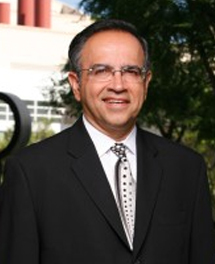Class Overview
This module will help Israeli business people understand and develop alternative marketing strategies for U.S. markets. We will focus on organic growth, when companies grow through existing or new products or services in existing or new markets. Discussions will cover securing new markets through expanding geographically and targeting new segments (or customers). Learning is facilitated through a combination of readings, case discussions, and an assignment.
Monday, March 5TH 8:00-12:00 and 1:00-4:30
Introduction, Alternative Growth Strategies, Honda Motor Car Company
MontGras: Export Strategy for a Chilean Winery
- Evaluate MontGras’s marketing strategy. Is it positioned in attractive markets/segment, or will it suffer as the industry enters a period of over-supply?
- To what extent can MontGras control its own market position, as opposed to being dominated by the country-of-origin effect? What indication does this have for the marketing strategy?
- Evaluate the U.S. and U.K. options described in the case. What would you recommend, and why?
- What aspect of this case did you find most interesting? Why? Can you use this aspect to aid your own possible development of marketing plans? How?
Biopure
- How do you assess Biopure’s potential in the human market? The animal market?
- What are the biggest obstacles to Biopure’s success in the human market? The animal market?
- How might Oxyglobin be a threat to Hemopure? How might it be an asset to Hemopure?
- What should Biopure do regarding the commercial release of Oxyglobin? If they release, what price should they set? How should it be distributed?
Tuesday, March 6TH 8:00-12:00
Customization of Marketing Strategies and Group Discussion
- We will make a list of Israeli products or services for export. The participants will be divided into groups. Each group will select a product or service offered by a group member firm for export.
- Dr. Currim will lead a brainstorming session on key questions and methodology for development of export plan
- Group Develops Marketing Strategy for Israeli Exports to the U.S.
- Each group will come up with:
(a) key questions to be answered in order to judge the export potential of the product or service, to be summarized on 1-2 transparencies, and
(b) an outline of a process or methodology for answering the key questions, to be summarized on 1-2 transparencies. - Group Presentations and Discussion (15-20 minutes per group), followed by a discussion on how the questions and methodology can be enhanced.
Thursday, March 15TH 1:30-5:00
Distribution Decisions
Four Steps Prior to a Distribution Decision
Invisalign
- Diagram Invisalign’s channel structure for the (a) promotion selling cycle and (b) ordering/physical possession cycle.
- What channel functions and flows are performed by each channel member for Invisalign and the traditional braces market?
- Are there any gaps in the channel? Are channel members performing funtions that Invisalign intends them to? If not, why not?
- Are channel power sources affecting Invisalign’s success? If so, how?
- What would you do to ramp up conversion from generation of interest to capture?
Pre-Readings
- An Export Marketing Plan for Small Companies, International Trade FORUM, 2, 1995.
- Strategic Marketing Management, 6th Edition, 2001, John Wiley and Sons, New York.
- “The Brand Report Card,” Harvard Business Review, January-February 2000, p. 147-57.
- MontGras: Export Strategy for a Chilean Winery, Harvard Business School Case 9-503-044
- Biopure, Harvard Business School Case 9-598-150.
- 6. Invisalign, Kellogg Business School Northwestern University Case KEL032-PDF-ENG
*I hope you can read items 4 and 5 before my Monday-Tuesday (March 5th/6th) session and item 6 before my Thursday (March 15th) session and briefly write your thoughts on each of the questions on the case (see below). This is important for the group discussion. Items 3, 4, 5, and 6 can be ordered from www.hbsp.com (Harvard Business School Publishing).
While it is preferable that other items are read before the two-day session, it is not necessary. However I recommend these items (particularly item 2) be read after you return to Israel. You may be able to find Item 2 (a paperback) in Israel at a lower price. Alternatively it can be ordered from www.amazon.com although they may take some time to ship your order. If some of item 2 can be read before my two-day session I recommend you read Chapters 11, 12, 9, 2, 3, 4, 5, 6, 7 (ordered from most important to important), or any subset of these chapters. Our discussion will focus on how the concepts in these chapters are being used, have been used, and can be used in specific company settings.




















































































